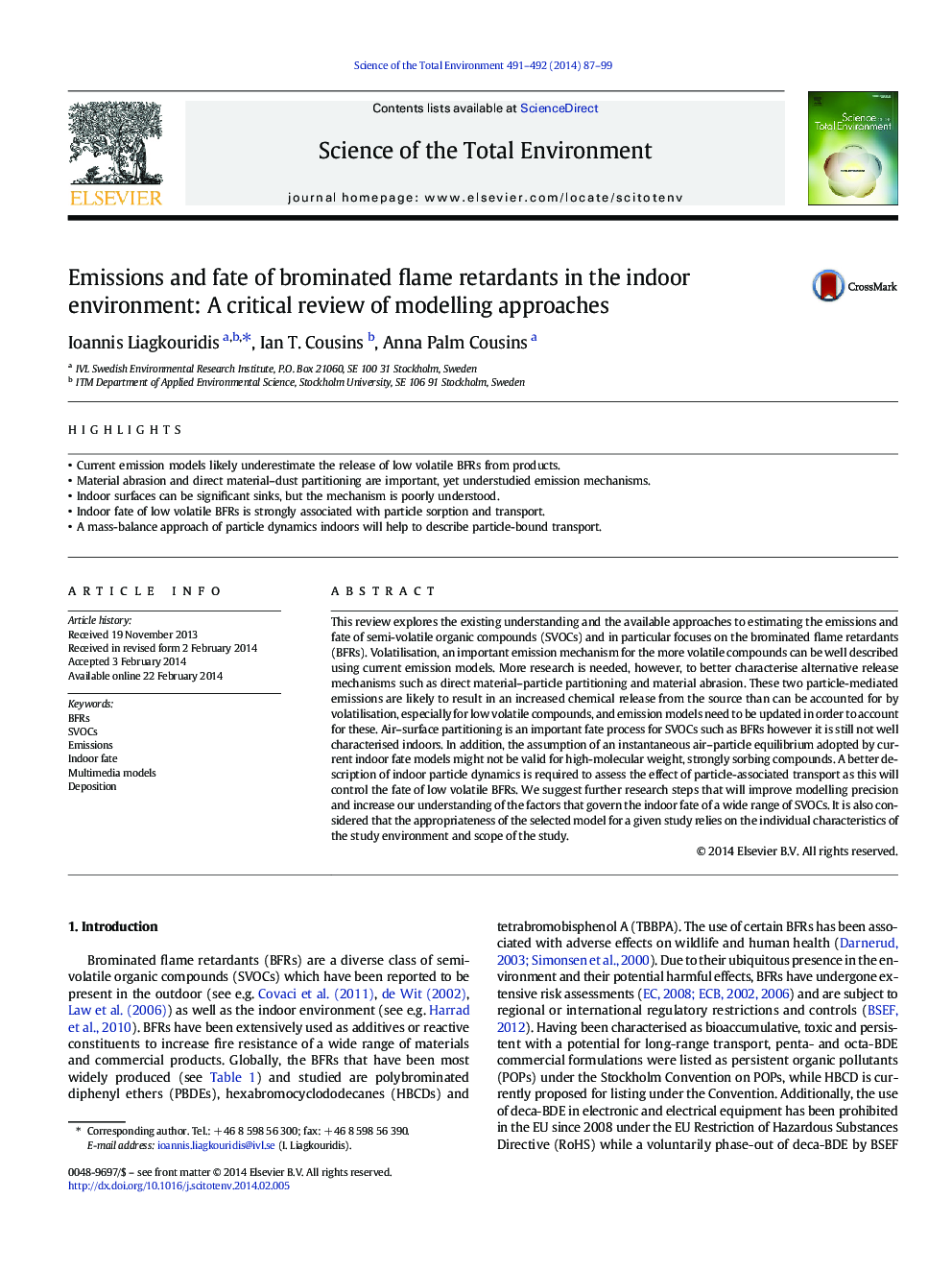| کد مقاله | کد نشریه | سال انتشار | مقاله انگلیسی | نسخه تمام متن |
|---|---|---|---|---|
| 4428456 | 1619779 | 2014 | 13 صفحه PDF | دانلود رایگان |
• Current emission models likely underestimate the release of low volatile BFRs from products.
• Material abrasion and direct material–dust partitioning are important, yet understudied emission mechanisms.
• Indoor surfaces can be significant sinks, but the mechanism is poorly understood.
• Indoor fate of low volatile BFRs is strongly associated with particle sorption and transport.
• A mass-balance approach of particle dynamics indoors will help to describe particle-bound transport.
This review explores the existing understanding and the available approaches to estimating the emissions and fate of semi-volatile organic compounds (SVOCs) and in particular focuses on the brominated flame retardants (BFRs). Volatilisation, an important emission mechanism for the more volatile compounds can be well described using current emission models. More research is needed, however, to better characterise alternative release mechanisms such as direct material–particle partitioning and material abrasion. These two particle-mediated emissions are likely to result in an increased chemical release from the source than can be accounted for by volatilisation, especially for low volatile compounds, and emission models need to be updated in order to account for these. Air–surface partitioning is an important fate process for SVOCs such as BFRs however it is still not well characterised indoors. In addition, the assumption of an instantaneous air–particle equilibrium adopted by current indoor fate models might not be valid for high-molecular weight, strongly sorbing compounds. A better description of indoor particle dynamics is required to assess the effect of particle-associated transport as this will control the fate of low volatile BFRs. We suggest further research steps that will improve modelling precision and increase our understanding of the factors that govern the indoor fate of a wide range of SVOCs. It is also considered that the appropriateness of the selected model for a given study relies on the individual characteristics of the study environment and scope of the study.
Journal: Science of The Total Environment - Volumes 491–492, 1 September 2014, Pages 87–99
